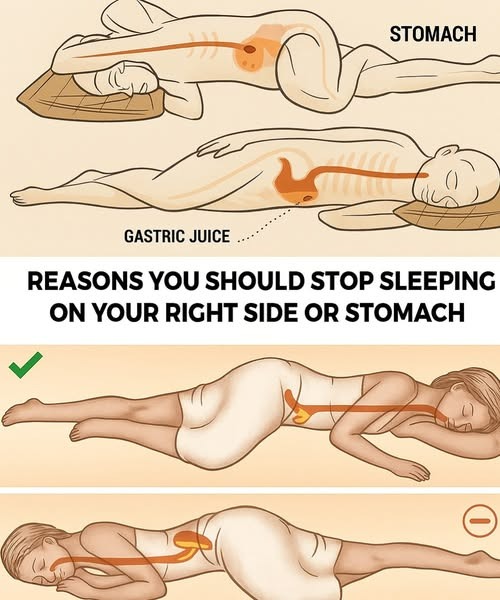When it comes to struggling with sleep, most people focus on supplements, apps, or special gadgets—melatonin, white noise machines, lavender sprays, or even expensive mattresses. But what if the real key to better rest isn’t something you ingest or buy, but rather the environment you create right next to your bed? Your bedside table, often overlooked, can be one of the most powerful influences on your ability to fall asleep and stay asleep.

It’s not just a spot for your phone or a lamp—it’s a central part of your sleep environment that sends cues to your brain about whether it’s time to wind down or stay alert. The items you keep there, and even the ones you don’t, can either promote relaxation or keep your mind in work and stress mode. Sleep experts emphasize that our brains rely heavily on environmental signals to determine when it’s time to rest. Clutter, harsh lighting, screens, and reminders of unfinished tasks can all disrupt your circadian rhythm and keep your body on high alert. On the other hand, a calming, intentional bedside setup can cue your brain to relax, helping you drift off more easily. By making small, thoughtful adjustments, you can turn your bedside into a sanctuary that supports restful sleep.
Research shows that environmental cues like lighting, clutter, and even scents significantly impact how fast you fall asleep and the overall quality of your rest. Think of your bedside as your pre-sleep command center. Is it filled with stress triggers like bills, devices, or reminders of work? Or is it filled with simple comforts that ease your mind? The difference can determine whether you toss and turn or sleep soundly. To design a bedside space that promotes better sleep, there are five essentials worth considering. First, keep a physical book or a journal within reach.
Reading a few pages of a novel or jotting down thoughts before bed can help your brain transition away from the stimulation of screens and into relaxation mode. Unlike scrolling through your phone, which exposes you to blue light that suppresses melatonin, a book or journal signals quiet reflection. Second, pay attention to lighting. A soft, warm light by your bedside is far more sleep-friendly than bright or blue-toned bulbs. Light is one of the strongest signals to your brain’s circadian rhythm, and keeping it gentle helps your body prepare for rest. Third, keep a glass of water nearby in a quiet, non-distracting container.
Staying hydrated is important, but the point is to have it accessible without creating noise or disruption in the middle of the night. Fourth, consider a calming scent. Lavender is one of the most studied essential oils for promoting sleep, and placing a small diffuser or using a linen spray can create a soothing atmosphere. It doesn’t have to be electric or complex—just enough to gently encourage relaxation. Finally, and perhaps most importantly, control the role of your phone. If you must keep it near you, put it on “Do Not Disturb” mode and place it out of arm’s reach.
Ideally, keep it away from your bedside entirely, since phones are one of the biggest culprits behind poor sleep. The temptation to scroll, answer messages, or check notifications keeps your mind active long after you should be winding down. Just as important as what to add to your bedside is what to remove. Phones, tablets, work materials, bills, TV remotes, and unnecessary medications should be kept elsewhere. These items send the wrong signals, telling your brain to stay alert and productive instead of safe and calm. Your bedside should communicate one simple message: “This is a place of rest.”
The beauty of this sleep hack is that it doesn’t require expensive purchases or major renovations. You can reset your bedside in just five minutes. Start by clearing away clutter, removing electronics, and organizing what remains. Add soft lighting, place a book or journal nearby, and introduce a calming scent if you enjoy it. These quick changes transform your bedside from a source of distraction into a ritual of care, reminding your brain each night that it’s time to rest. The benefits go beyond falling asleep faster. A peaceful bedside reduces nighttime anxiety, helps you break the habit of late-night scrolling, creates a sense of routine, and sets the stage for deeper, higher-quality rest.
Better sleep naturally improves your mood, focus, and productivity the next day, proving that sometimes the smallest changes can have the biggest impact. We often assume that good sleep requires big investments like new mattresses, supplements, or coaching, but in many cases, it’s about the simple adjustments we overlook. The space next to your bed might hold the answer you’ve been searching for. Before you turn off the lights tonight, take a look at your bedside and ask yourself honestly: is this space helping me rest or keeping me awake? By turning your bedside into a calm, intentional space, you’re not just decorating—you’re sending your brain a nightly reminder that it’s safe to let go, relax, and drift into restorative sleep.





